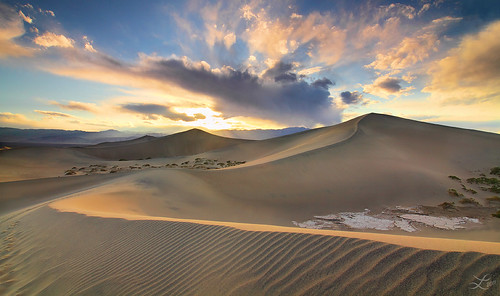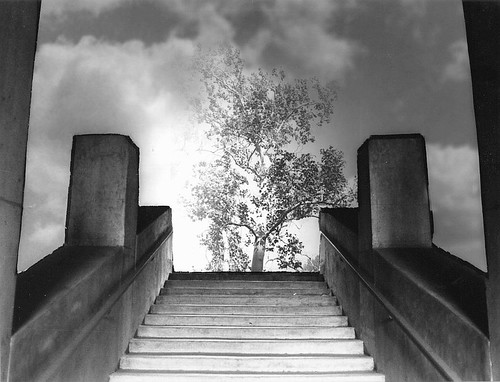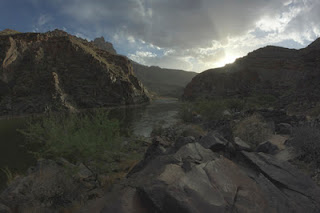"These are very deep waters"
-- The Adventures of Sherlock Holmes, Sir Arthur Conan Doyle
Authority loves certainty; to be a leader is to confidently declare a direction … even without all of the facts. I can see how it happens. Because when does anyone have the luxury of collecting all the facts? In some sense, you would have to know everything in the universe to be absolutely certain of the right path. So, leaders try to select the most *probable* path to victory (based on experience, intuition … flipping a coin). Built into reality seems to be the difficult task of picking a direction without absolute certainty - an icky feeling to be sure, especially when consequences get serious. Unfortunately, I think this simple, innocent, natural state of things has led to some drastically negative repercussions for society in general, and individual autonomy in particular.
As people become more and more specialized, the tendency is to refer to 'authority' figures to guide every other aspect of life where you have not specialized. In an idealized sense, it could be a lovely thought: where we all rely on each other to contribute our unique area of specialty to the whole. While I do think the ultimate goal is for people to achieve more together than would be possible individually, the danger is a misrepresentation by 'authority' figures (intentional or otherwise) of the available options. In some sense, the challenge is to gauge how certain you are about a situation versus how certain someone in authority seems to be about a situation.
If you forgot you left your keys in the living room, but were told by some authority on finding keys that he checked and they definitely weren't in that room, if you followed that advice, then no matter how hard you looked everywhere else, no matter what expense you might incur hiring more and more people to look for those keys, you would not find what you were looking for. Sometimes you simply need to take another look at ground you thought was already covered.
In the past, if I had a bad cold, I went to the doctor and took whatever pill was prescribed. I thought that was the responsible, adult thing to do. It did not seem blind trust to accept the advice of a well intentioned person who was operating fully within the standard parameters of an esteemed medical system. Completely logical, completely sensible, completely limited. There are many examples of built in belief systems that seem eminently rational, that seem to have enough evidence to convince the experts in each field; but I have found it very empowering to remind myself that any dictate from authority is still based on incomplete data. "Reduce carbon emissions," "Avoid the sun," "After the big bang …" So many built in assumptions. A theory is only as good as it can be tested and produce useful results. (And some results take a long time to be revealed.) Looking back 50 years,
doctors were promoting cigarettes. Paradigms can change. Even the ones your life depends on.
The allure of advice from authority costs a part of your autonomy. I'm not saying that is definitely bad; the advice could be exactly what you needed. Life is complicated; we can help each other out. Just don't get stuck. Even experts who are well intentioned can divert you from an optimal path. I have found it so helpful to explore the wild wilderness of the internet to jostle some preconceived notions. To find out if there is another possible solution to a particular question. I'm not looking for a complete peer-reviewed thesis, or even a complete sentence ;p Just key words that lead to other key words that lead to some simple test I can try out and monitor results for myself. (For me, last year was mainly about testing
food assumptions, since I see it as a potential to influence medical expenses much more significantly than I had previously thought.)
Hidden in Plain Sight
Nothing hides the truth like a plausible explanation. I threw together a silly little example to show how even a well intentioned system can run amuck. The way I see it: scientists test a hypothesis, report results. These results are analyzed by an official committee who reports on the best hypothesis from the available evidence. This thesis is then reported to the rest of population. Rational people are then supposed to act on this thesis. This idea has several problems. In my example, the blue lines are supposed to represent the results from all the latest and greatest scientific studies. A governing body might look at the results and declare it looks like a blue triangle; the universe is a blue triangle; and any approved standard of care falls within this paradigm. Eminently sensible. Just look at the data! How dare anyone presume to question it?

Well, the issue isn't so much the data. Each study reveals as much as its input conditions. The issue is with drawing a conclusion from an inadequate sample size.
The focus is too limited. I can see how this can happen even in the best of circumstances. Scientific studies need funding. This funding usually comes either from industry or academia. Academia funding comes from review panels. Review panels need plausible cause in order to allocate resources effectively. I suspect this causes most studies, even in the best sense, to be incremental proposals vs the currently accepted datapoints. This will tend toward incremental results that cluster around pre-existing paradigms.

Current theories about the nature of the universe are based on 4% visibility.
I am not kidding. I would not call that an adequate sample size for a high probability theory. You can call it a 4% theory, stated in the context of extreme humility, not declare the universe is 96% dark matter and maintain the existing paradigms. I think it is increasingly unusual to fund studies that are outside of the box, so to speak. In my little example, the universe actually looked like this second figure: a cube. Studying one small corner alone would drastically skew your perception of reality, which in turn skews your 'rational' options. And in my example, the proper interpretation of the data isn't even really to call the universe a triangle ( not even the right number of dimensions); it is a limited perspective based on limited data.
The solution?

In my experience: Test it yourself! Or find other people who are testing ideas you find compelling as a closer starting point. The goal is not to re-invent the wheel, but find the point where you suspect something has gone terribly wrong and start investigating. I view it like
being a detective instead of waiting to hear a verdict from a judge. Not all the suspects a detective interviews will have anything to do with the final verdict. Doesn't mean the lead wasn't worth checking. Your judgment is important. Going back to my little example, it's like suddenly opening yourself up to all kinds of noise. Apparently, this is what the authority figures are trying to shield us from. Yes, I suppose it is not as pretty and sanitized as the official version of available options. But at this point, finding patterns in noise is much more interesting and rewarding to me than picking the lesser of two evils, if those were your options.

A significant danger of leaving it to authority systems to provide your sanitized available options, is that valid, but as yet unformalized truths will fall outside the approved 'standard of care'. I symbolize this by a point on my example cube of the universe that is not yet part of the approved 'triangle'. Even though you may have figured out an optimal solution for your situation, doctors (or other trained professionals) can be sued for recommending anything other than the approved 'standard of care.' You may be discouraged (or even forced) away from your optimal solution to conform to the approved procedures. Scary territory. I think they key is to keep a proper perspective. Know where experts or authorities are coming from; there is a limited set of options legally imposed on authority figures even if they are honestly intending to look out for our best interest. (Needless to say, conflicts of interest, ignorance, or downright fraud would make this much worse.) Just know the context of the information you are getting so you have a chance to optimize it for yourself.
A Side Note about Studies
Engineers have a common expression: Garbage In, Garbage Out. We use tools to help automate common or complicated tasks, but those tools are only as useful as their input parameters. If you setup the test wrong, you will misinterpret the results. You could put together a whole flashy presentation with spreadsheets and trendlines and conclusions … all useless, maybe even harmful. So, when I hear there is some study supporting the latest drama on the news, I can't in good conscience as a rational human being accept that study as proof of anything. Context is everything. I would have to investigate whether the study setup was at all related to my own situation.
The Mythbusters Discovery series show in depth how they setup their experiments, and then declare a myth busted or confirmed at the end of the show. It is probably one of the most visible insights the public sees into a scientific process. Despite (or as a result of) the transparency of the Mythbuster's studies, they are inundated with comments and feedback about problems or oversights with their test. Some shows are even dedicated to revisiting myths with tighter parameters or a new angle. Wonderful process! Even though the myths may seem relatively silly compared to the headlines splashed across the news, their willingness to engage the public in the process sparks creativity, ingenuity, and insight into the natural world.
When 'studies' declare results on the news, they are essentially 'busting' or 'confirming' a myth (or hypothesis). Yet, the conclusions are presented as fact (usually with high drama and intense music), and experts in the field all to often end up supporting dogmatic assertions. It shuts down creativity, engagement, and rational thought. How the studies were conducted is barely mentioned, if at all. Imagine the faults people would find if they knew a fraction of how a study was set up! And yet, the implication is that people should change their lives as a result of the 'proof' from these studies.
Summary
Creativity is needed! Humility is needed! Despite all presumptions, no one has figured this thing out yet. But that isn't intimidating, it is utterly liberating. If you find your selection of options ranges from bad to worse, question the source of those options. You may be supporting someone else's limiting beliefs. I suspect we have only begun to explore the possibilities available to us.
by Laura A Knauth


















